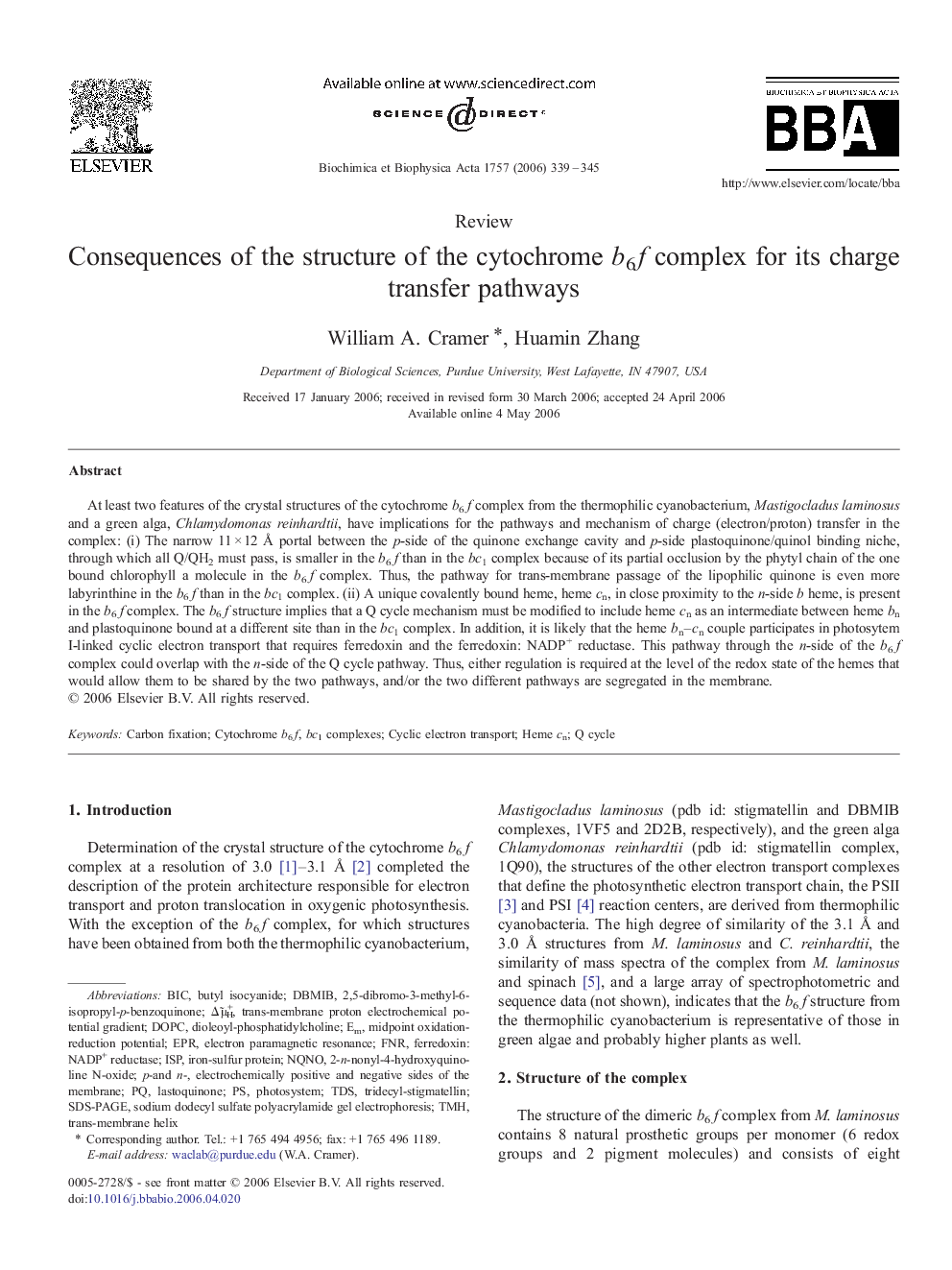| Article ID | Journal | Published Year | Pages | File Type |
|---|---|---|---|---|
| 1943697 | Biochimica et Biophysica Acta (BBA) - Bioenergetics | 2006 | 7 Pages |
At least two features of the crystal structures of the cytochrome b6f complex from the thermophilic cyanobacterium, Mastigocladus laminosus and a green alga, Chlamydomonas reinhardtii, have implications for the pathways and mechanism of charge (electron/proton) transfer in the complex: (i) The narrow 11 × 12 Å portal between the p-side of the quinone exchange cavity and p-side plastoquinone/quinol binding niche, through which all Q/QH2 must pass, is smaller in the b6f than in the bc1 complex because of its partial occlusion by the phytyl chain of the one bound chlorophyll a molecule in the b6f complex. Thus, the pathway for trans-membrane passage of the lipophilic quinone is even more labyrinthine in the b6f than in the bc1 complex. (ii) A unique covalently bound heme, heme cn, in close proximity to the n-side b heme, is present in the b6f complex. The b6f structure implies that a Q cycle mechanism must be modified to include heme cn as an intermediate between heme bn and plastoquinone bound at a different site than in the bc1 complex. In addition, it is likely that the heme bn–cn couple participates in photosytem I-linked cyclic electron transport that requires ferredoxin and the ferredoxin: NADP+ reductase. This pathway through the n-side of the b6f complex could overlap with the n-side of the Q cycle pathway. Thus, either regulation is required at the level of the redox state of the hemes that would allow them to be shared by the two pathways, and/or the two different pathways are segregated in the membrane.
